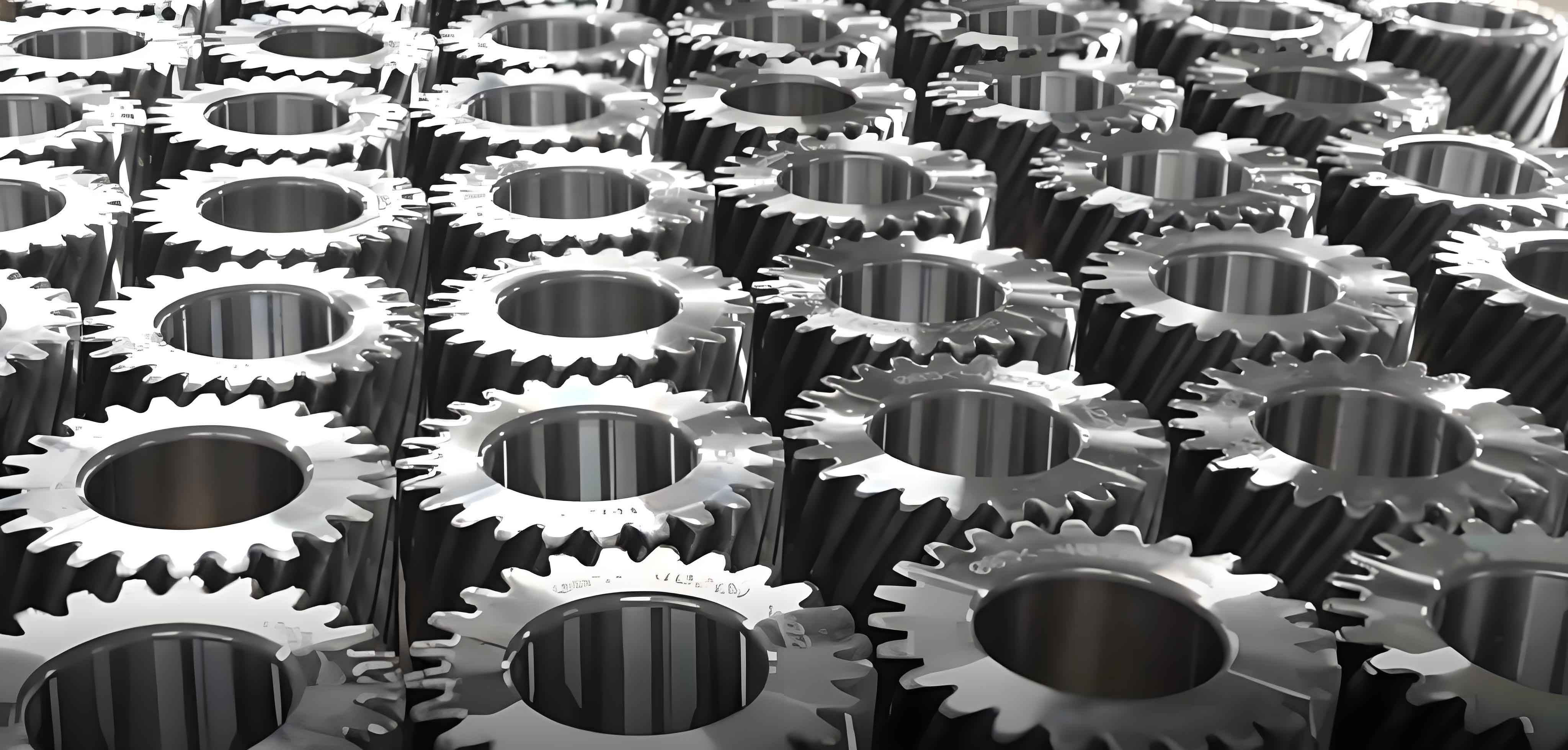Abstract
This paper focuses on the dynamics modeling and dynamic characteristics analysis of spur gear with crack-pitting composite faults. By deducing the time-varying mesh stiffness of spur gear with single and composite faults, and substituting the composite fault stiffness into the established dynamic model of spur gear pairs, the vibration displacement and vibration acceleration in the time domain are obtained, and the frequency domain is studied through Fourier transform.

1. Introduction
1.1 Research Background and Significance
The stable operation of spur gear transmission systems is crucial for the reliability and safety of mechanical equipment. However, due to various factors such as load changes, lubrication conditions, and manufacturing errors, spur gear is prone to faults such as cracks and pitting, which affect the performance and service life of the transmission system.
1.2 Overview of Gear Transmission and Common Faults
Gear transmission is a widely used transmission method in mechanical systems, and its performance directly affects the overall operation of the equipment. Common faults of spur gear include cracks, pitting, wear, and plastic deformation.
1.3 Research Status of Gear Faults at Home and Abroad
Table 1 summarizes the research progress on spur gear fault analysis methods.
| Year | Researcher | Method | Key Contributions |
|---|---|---|---|
| 1949 | Weber | Potential energy method | Divided total tooth energy into contact, bending, and shear energies |
| 1983 | Cornell | Improved potential energy method | Added axial compression energy |
| 1987 | Yang and Lin | Material mechanics theory | Provided specific time-varying mesh stiffness formulas |
| 20xx | Wang and Howard | Finite element analysis | Studied the influence of different gear modifications on mesh stiffness |
2. Improved Calculation of Time-Varying Mesh Stiffness for Healthy Spur Gear
2.1 Overview
The traditional cantilever beam model for meshing teeth has large calculation errors. Therefore, an improved equivalent cantilever beam model is proposed.
2.2 Tooth Deformation Stiffness Calculation
Different formulas are derived for spur gear teeth with less than 42 teeth and more than 42 teeth.
2.3 Gear Body Deformation Stiffness Calculation
Based on Muskhelishvili’s elastic ring theory, the deformation stiffness formula of spur gear body is given.
2.4 Comprehensive Mesh Stiffness Calculation
The traditional comprehensive stiffness calculation formula has two main problems: the use of linear contact stiffness and repeated calculation of body deformation stiffness in the double-tooth mesh stage. These issues are addressed by using nonlinear contact stiffness and introducing a correction coefficient.
Table 2. Gear Parameters for Calculation
| Parameter | Value |
|---|---|
| Tooth number | Z1=Z2=20 |
| Module | m=2 |
| Pressure angle | α=20° |
| Face width | B=20mm |
| Material | Steel |
3. Mesh Stiffness Calculation of Spur Gear with Crack Fault
3.1 Overview
The research on the time-varying mesh stiffness of cracked gears is the basis for studying gear composite faults.
3.2 Mesh Stiffness Calculation for Spur Gear with Crack Faults
Formulas for crack stiffness are derived separately for spur gear teeth with less than 42 teeth and more than 42 teeth.
Table 3. Crack Depth Classification
| Crack Depth | Percentage of Tooth Height |
|---|---|
| Shallow | 10% |
| Medium | 30% |
| Deep | 50% |
| Very Deep | 70% |
3.3 Mesh Stiffness Calculation for Spur Gear with Pitting Fault
Circular pitting models are selected due to their regularity and ease of description.
4. Mesh Stiffness Calculation of Spur Gear with Crack-Pitting Composite Fault
4.1 Overview
Based on the research on single faults, the mesh stiffness formulas for spur gear with crack-pitting composite faults are derived.
4.2 Composite Fault Gear Single Tooth Model
The composite fault gear model and the evolution of the composite fault failure area are introduced.
4.3 Tooth Deformation Stiffness Calculation for Different Composite Fault Combinations
Formulas for the deformation stiffness of spur gear with different composite fault combinations are derived.
Table 4. Composite Fault Combinations
| Crack Depth | Pitting Severity | Combination |
|---|---|---|
| 10% | Mild | Combination 1 |
| 30% | Medium | Combination 2 |
| 50% | Severe | Combination 3 |
| 70% | Mild | Combination 4 |
| … | … | … |
4.4 Model Verification
Finite element models of composite fault gears are established in COMSOL to verify the correctness of the derived formulas.
Conclusion
This paper deduces the time-varying mesh stiffness formulas for spur gear with crack-pitting composite faults and verifies their correctness through finite element analysis. The results provide a theoretical basis for the fault diagnosis and dynamic characteristics analysis of spur gear with composite faults.
